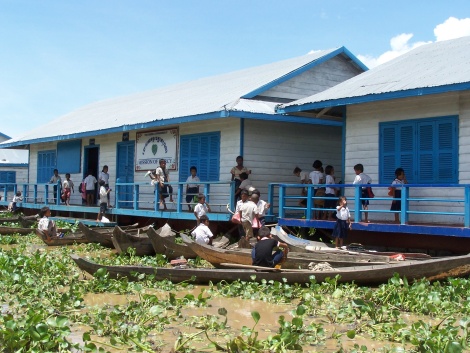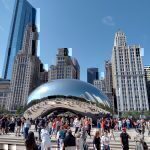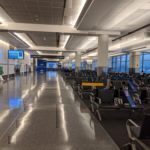There have been a number of unique, never-seen-that-before experiences on this trip — such things kinda come with the territory, and its part of the reason we love to travel. However, and I say this fully aware that our trip is not over yet, one of the most memorable has to be our trip to the floating village outside Siem Reap.
We’d heard that they were worth seeing, so we asked our hotel to arrange the trip for us. It cost $20 to book a boat, and our trip out there on a tuktuk was covered as part of our hotel costs. We left around 10 and arrived some time after 11. I say “some time” because time sort of looses meaning in Asia — especially with all the time zone hopping we’ve been doing. However, that hour was an interesting one!
We started out driving through Siem Reap, which is an Asian city that probably closely matches whatever stereotypes you have in your mind of Asian cities. Traffic is crazy, the roads vary in quality, and traffic laws are more like suggestions. Continuing out of the city we began to see some of the poorer folks, shanties and farms, vendors at the roadside selling fried crickets and fresh fruit — at this point, nothing we hadn’t already seen… but we kept going.
After 15 minutes we turned onto a dirt road and toward an actual village, where there were almost no concrete buildings: wood posts with sheet metal on top were more standard fare. People’s clothing was more random and tattered, and garbage was piled up randomly. Definitely a level lower than what we’d come to expect… but we kept going.
As we left the village, we turned onto what I could only describe as a dirt path — road wouldn’t be the right word. For awhile we saw other motorbikes or bicycles, but soon enough those were all behind us and all we could see for miles in either direction was green bushes, blue sky, and the path. Its possible that as a child in Bangladesh I’d been somewhere that remote, but I don’t remember it — none of us could name a time we were so cut off from the world. For the next 10 minutes there wasn’t a single shack, vehicle, person or even animal. We couldn’t see a cell tower, power line, sign post, or any other evidence that we hadn’t been transported to an empty alien planet. It occurred to us at some point that if our tuktuk driver wasn’t an honest Cambodian, we could very easily end up very very stranded… but we kept going.

Finally, when we were all getting really nervous and joking about how our mothers would never hear about this adventure, I spotted a roof top, and moments later a tourist bus in the distance. We’d been driving along-side an empty stream, and as we approached the bus, we saw a lean-to with some Cambodian folks hanging out under it. Next to them the stream had water in it, and a couple large wooden boats seemingly abandoned to the dry season. When the Cambodians saw us coming, a cooler of iced beverages appeared and one of the boats was pushed into deeper water where it started bobbing waiting for us white folks to arrive.

The Cambodians were happy to see us, and eager escorted us, with our newly purchased cold soda, onto the boat. Our tuktuk driver waved good-bye with the promise he would be waiting for our return, and our two young pilots fired up the engine and we put-putted off into the river. As we traveled we began to see other boats, heading towards us full of various wares: fresh drinking water in large jugs, fish, bamboo. After another 10 minutes we rounded a corner and saw what we’d been traveling toward. Dozens of makeshift houses, just like their land-bound equivalents, floated in the water, built on top of bundles of bamboo. Here was a complete, water-based village with shops, restaurants, a battery-charging station, and a school partially funded by an American NGO. While we were there school let out and the kids poured out, big brother or sister carting the “car pool” home on the family boat.


It was definitely a poorer village, but the richest of them had rigged solar power to charge their batteries for their TV, and most of them had at least a battery to charge their cell phones — wireless communications being the only real infrastructure the country has. We tried not to stare, but the people stared back at us, the children waving excitedly if we waved at them first. Although the floating villages are starting to become some of a tourist attraction, and indeed the dirt path we traveled along the dried up stream one day hopes to be a channel built back to the main road so the boats can pick up tourists earlier in the long journey, we are still among the relative few lucky (and adventurous) ones who’ve made it that far yet.

The trip back was significantly less nerve-wracking, now that we knew where we were going. Our tuktuk driver was, of course, waiting for us — with bottles of cold water and a big grin. He seemed proud to be able to show us such a unique and incredible part of his country, and every one in our little 3-person travel party felt very privileged to have made the journey.



